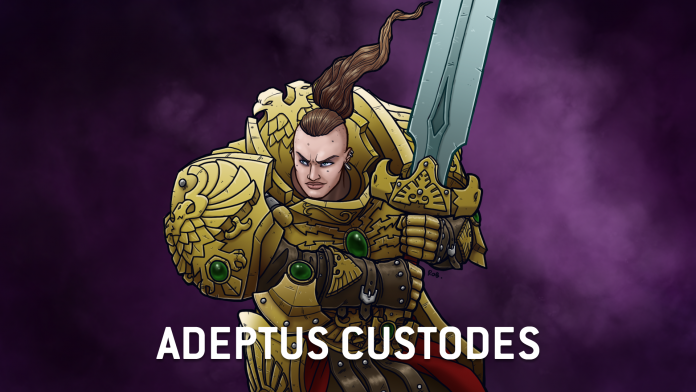In this series of articles we take a deep dive into a specific detachment for a faction, covering the faction’s rules and upgrades and talking about how to build around that faction for competitive play. In this article, we’re covering the Shield Host Detachment from Codex: Adeptus Custodes.
The Adeptus Custodes had a rough go of it when their Codex launched in early tenth edition, but thanks to several balance passes have improved to the point of being very competitively viable. Although more recent releases like the Solar Spearhead and Lions of the Emperor Detachment have stolen the show, their baseline Shield Host Detachment still has a lot to offer.
Detachment Overview
Depending on your point of view, the Shield Host is the baseline Detachment for the Adeptus Custodes, giving you a broad way to play the army that supports every unit capable of using martial Ka’tahs. Unlike Talons of the Emperor, which encourages and buffs your Sisters of Silence, the Shield Host is essentially a Custodes-only Detachment, with buffs that focus on your warriors in gold. This is one of two Custodes Detachments to receive a balance update, making its Martial Mastery rule much more powerful to make the Detachment worth playing. On the table, Shield Host armies have a lot of flexiblity and are still very viable competitively, and usually build into melee armies running multiple Blade Champions.
Detachment Rule: Martial Mastery
At the start of the battle round, you can select one of the following effects to apply to your army until the start of the next battle round:
- Each time an Adeptus Custodes model in your army with the Martial Ka’tah ability makes a melee attack, a successful unmodified Hit roll of 5+ scores a Critical hit.
- Improve the AP of melee weapons equipped by Adeptus Custodes models in your army with the Martial Ka’tah ability by 1.
This was changed in the balance dataslate, going from an ability you get once per game to something that’s always on and in effect every battle round. And in that sense, these are both very good upgrades – the former combines with the Martial Ka’tahs ability to give you Sustained Hits or Lethals on a 5+, while the latter can help you push through the walls of 2+ saves that some armies field. As Custodes you already have the best infantry in the game, and this kind of “always-on” upgrade makes them even better, ensuring you get the most value out of a small number of units.
That said, this benefit very obviously only works on melee units, and so this Detachment tends to push you towards melee builds, often with multiple Blade Champions leading units of Wardens or Custodian Guard. It means that anything with a high volume of Attacks becomes absurdly deadly, but it also has the value of getting smaller units over a threshold where they can reliably sweep through a unit of Marines, which gives you the flexibility to go wide with smaller units like Venatari.
When it comes to picking your mode, it depends on the target. Against marine targets – T4, 3+ save, or anything with a 3+ save, the +1 AP is marginally better. Where you want to use the boosted Critical option is when you’re going up against invulnerable saves, and often you’ll find you’re capped out at AP-2 anyways. Alternatively, take the boosted Criticals if your targets won’t get a save against either attack profile.
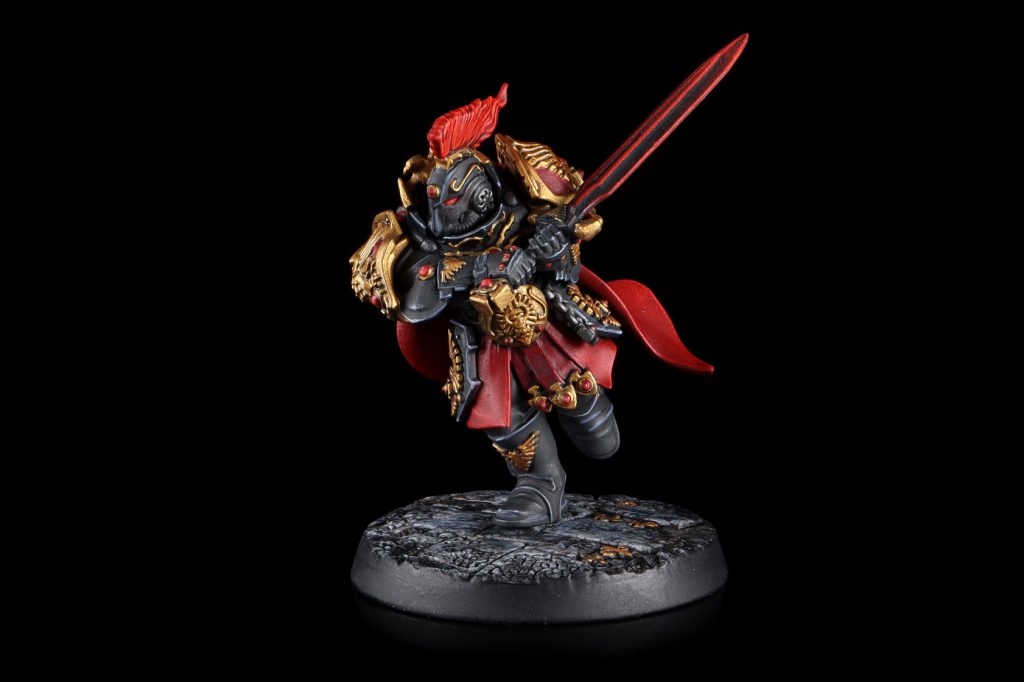
Enhancements
Of these four enhancements, only the Panoptispex really sees competitive play, though that’s primarily because its low cost (5 points) makes it an auto-include any time you come in short of 2,000 points moreso than because of its value. Of the other options, two are Shield-Captain only, and that basically kills their utility in competitive lists.
- From the Hall of Armouries – Shield-Captain Only. Adds +1 to the Strength and Damage of the Bearer’s melee weapons. This is a huge upgrade, and absolutely worth looking at to turn a Shield Captain’s spear profile from “OK” to “stellar.” That said, this can only go on a Shield Captain and those just aren’t what you’re looking to run in this army’s detachments.
- Castellan’s Mark – Shield Captain only. After both players deploy and determine first turn, you can pick up to two non-Sisters Custodes units in your army and redeploy them – and you can put them back into reserves if you do this. This is a very useful trick, in part because it lets you wait for the opponent deploy, letting you set some clever traps after you already know if you’ll be going first or second. It’s very cute, but probably a bit too expensive here.
- Auric Mantle – Shield Captain or Blade Champion. They get +2 Wounds. This is whatever; not really worth doting on, though if you take it using it to make a W10 Dawneagle Jetbike Shield Captain is pretty great.
- Panoptispex – Shield Captain or Blade Champion. While this model is leading a unit, their ranged weapons have [IGNORES COVER] – this is huge for pushing through your AP-1 spear shooting, making sure you connect. It won’t combine with the Detachment rule at all, but it does give one unit a bit of extra crunch.
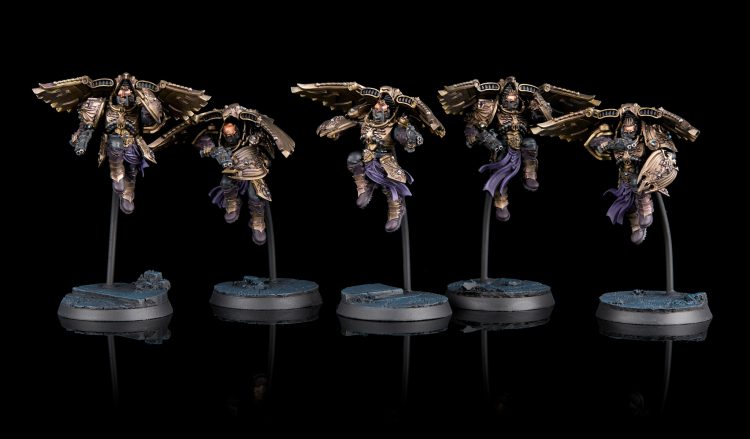
Stratagems
The Stratagems in this Detachment are pretty good! There was a lot of fuss made when the Codex released about how they weren’t as good as the index, but there’s still plenty of power in them, especially after the change last year to Devastating Wounds.
- Arcane Genetic Alchemy (Battle Tactic, 1 CP) – Used in any phase after a Mortal wound is allocated to one of your Custodes. You get a 4+ feel no pain until the end of the phase against mortal wounds. Yeah, this is a downgrade from the days when it was just an army ability but since Devastating Wounds went back to being mortals, there’s a ton of value to be had in this. It’s great for shrugging off guard mines, tank shocks, and uppity Infernal Masters, and it’s useful for keeping your Wardens’ Living Fortress rule on deck.
- Avenge the Fallen (Strategic Ploy, 1 CP) – Used at the start of the Fight phase on one of your Custodes units below Starting Strength to give them +1 attacks in melee, or +2 if they’re below half strength. If you’re going from five models to four this is a huge boost in output, and especially good if you can pair it with a Blade Champion, and its benefit is further compounded by the detachment rule.
- Unwavering Sentinels (Strategic Ploy, 1 CP) – Used in the Fight phase after an enemy targets one of your Custodes Infantry units that’s within range of an objective marker you control. That enemy unit gets -1 to hit for the rest of the phase. This is pretty solid, and it’s going to be something you’ll want against melee armies looking to trade up into your expensive units. Every missed attack counts when you need to keep your precious golden warriors on the table, and this combos very well with Wardens’ -1 to be wounded to blunt incoming attacks from big melee threats.
- Multipotentiality (Strategic Ploy, 1 CP) – Used in your Movement phase on a unit that Fell Back – that unit can shoot and declare a charge this turn. The movement phase timing on this isn’t ideal but it’s still a powerful Stratagem to have, letting you drop back and finish off a target with shooting or just reposition and set yourself up to fight first again.
- Vigilance Eternal (Strategic Ploy, 1 CP) – Used in your Movement phase on a Battleline unit in your army that’s within range of an objective marker you control. That marker stays under your control until an opponent controls it at the start or end of any phase. “Sticky” objective effects are always great, and for an army that’s as starved for models as the Custodes, it’s especially good, letting you move on from objectives and put pressure on the opponent.
- Archaeotech Munitions (Wargear, 1 CP) – Used in your Shooting phase on one of your Custodes units to give them either [LETHAL HITS] or [SUSTAINED HITS 1] on their ranged weapons for the rest of the phase. This is a solid buff for your shooting output, though not tremendous. It’s worth noting that it will work on vehicles, so you can always throw it on a Calladius if you’re feeling spicy, but most of the time you’re going to use it to proc Sustained Hits on your Guardian Spears or drop Lethal Hits on your Hurricane Bolters to they can punch up. This combos well with Custodian Guard and their ability to shoot twice in a phase.
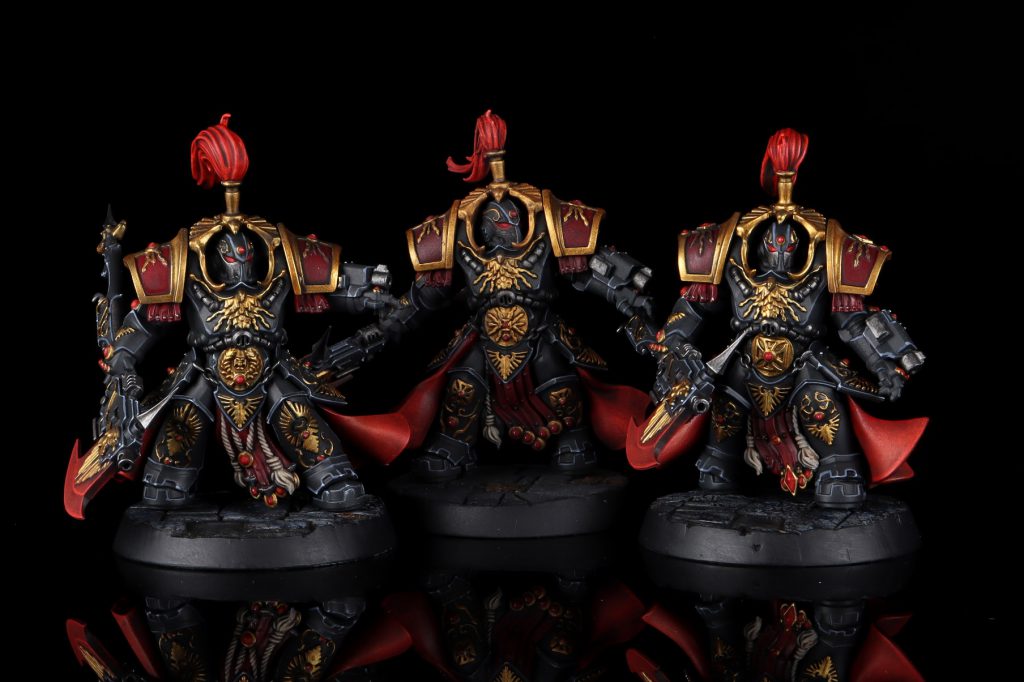
Playing This Detachment
This is very much a melee Detachment for the Adeptus Custodes and the competitive lists running Shield Host reflect that utterly. Every competitive Shield Host list runs at least one Blade Champion, and recent successful lists run three. It’s a perfect marriage in that regard – the Blade Champion’s biggest drawback is only having 5 Attacks in Victus Mode, but giving him Sustained Hits and Critical Hits on a 5+ really helps his damage output, ensuring you’ll often get 1-3 extra hits to give you the best chance at nailling a bunch of Devastating Wounds. Blade Champions pair well with Custodian Guard for re-rolls to wound, but they’re most commonly seen leading Wardens because of the help they provide in getting those to the fray.
Your other key melee threats here are Vertus Praetors and Allarus Custodians. With 5 Attacks each and Lance, Praetors make excellent, fast melee threats in this Detachment and the Shield-Captain on Dawneagle Jetbike is the only Shield-Captain worth taking in the army as of this writing. Finally, Venatari are really good in this detachment because of how deadly either size of unit is out of their free Rapid Ingress, and full units of six have shown up in top builds.
Moreso than any other Custodes Detachment, successful Shield Host lists run heavy on infantry, typically running multiple units of Wardens to accompany your Blade Champions into the thick of it. The big shame here is that Shield Captains just aren’t very good, or at least aren’t nearly as good as Blade Champions when it comes to getting across the table and doing damage in melee – the combination of advance + charge and a 3-damage attack is tough to beat. Without Fights first there’s no longer as much value in just sitting on objectives and daring your opponent to move in, but you can move up, sticky them, and then charge ahead into whatever target your opponent is presenting. While you’re building your units, note that attached Inquisitors like Draxus won’t bnefit from the Detachment rule, but they will benefit from the Archeotech Munitions and Avenge the Fallen Stratagems.
Because this Detachment doesn’t really buff your vehicles or shooting, enemy transports can present a bit of a problem. The good news is that with banners your units have a high enough OC that enemy units will need to get out of their transports and fight you in person. The bad news is that this may mean getting hit first. That can be a problem if you’re up against Emperor’s Children or Possessed, where high volumes of low-AP attacks with Lethal Hits or Devastating Wounds can cause you some real problems and drop your numbers to the point where you aren’t able to hit back effectively.
Strengths
- Always-on Melee buffs. The melee buffs you get for this Detachment are good, they’re always on, and they’re not particularly complicated. You can pick this Detachment up and just play it.
- More damage buffs. As if those weren’t enough, you also have the ability to fall back and charge, give your units +1 to their attacks if they’ve lost a model, and add either Lethal Hits or Sustained Hits 1 to your shooting.
- Decent Defensive buffs. There are some solid defensive buffs here with -1 to be hit in melee and a 4+ feel no pain against mortal wounds.
Weaknesses
- Shooting. Although you have the the Archaeotech Munitions, there’s not a lot else here to make your shooting any better.
- Non-Dreadnought Vehicles. You don’t have much support here for your non-walker vehicles, and while you can still take them, you’re better off focusing on your best options. That can mean enemy transports may be a problem for you.
- Speed. Unless you go heavy on Venatari or Bikes, you’re not terribly fast with a Custodes melee army – your models move 6″ and you get a once-per-game Advance-and-Charge with each Blade Champion, but that’s about it. You don’t really have good transport options and Deep Striking is risky, even with a free re-roll to the charge. Against an opponent that isn’t willing to come to you, this may cause problems.
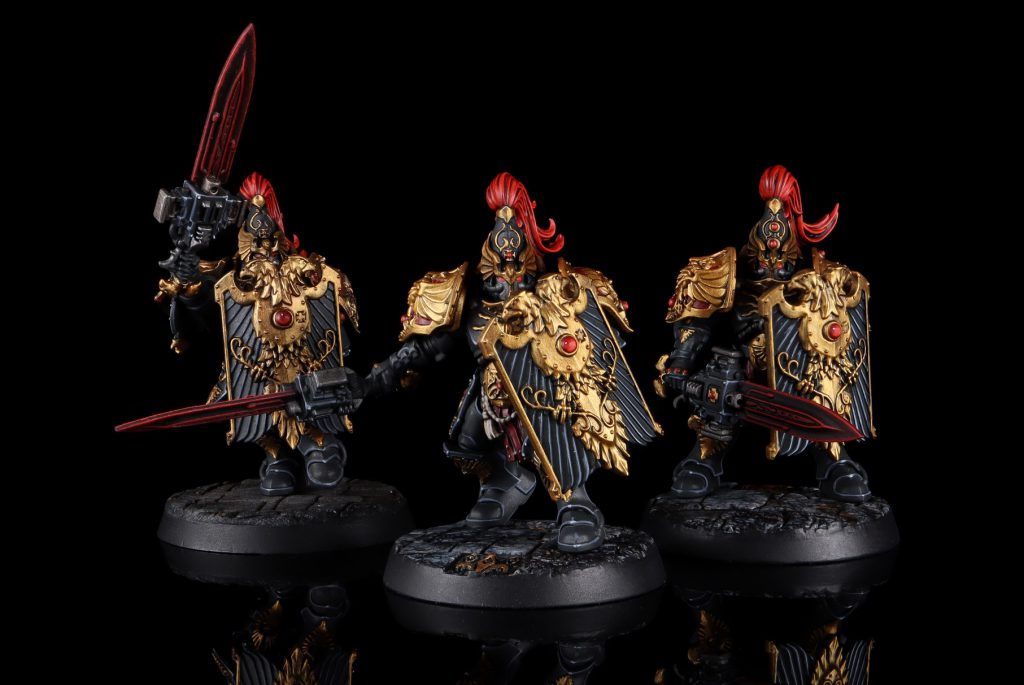
Sample Lists
Shield Host lists have fallen out of vogue recently, partly due to the fact that the two new detachments, Solar Spearhead and Lions of the Emperor both present the army with shiny, new toys with a lot of power. But the Shield Host list still has a lot to offer and is still the best way to play a Custodes melee pressure army. To that end, we still see successful lists pop up from time to time, especially in the teams format.
Joel Larsson’s List
Joel’s been running Shield Host for a while, and has been doing very well with them in Swedish team events. His lists run all-infantry with a trio of Blade Champions. Joel went 4-0-1 with this list at the Fantasia Fanatic XLVII GT in late March, 2025, finishing 2nd after tying to Björn Eriksson’s More Dakka! Orks in round 4.
Joel's List - Click to Expand
It’s a pretty simple list – you have three Blade Champions, each one of which will attach to a 5-model unit of Wardens, with two units of Custodian Guard, one of which is sporting Draxus. Draxus really likes the ability to shoot twice and re-roll wounds with her attacks, and gets the most out of being with Custodian Guard. The Warden units aren’t likely going to all start on the table, with at least one unit being a good target for a turn 2 Rapid Ingress to get into position, and likewise the Venatari give you a good boost of speed to help move around. The rest of the army are just cheap chaff to hold objectives and do actions.
Stephen Box’s List
Stephen’s also been on Shield Host for a while, and hit paydirt in mid-February when he took this Shield host list to a 5-0, first-place finish at the 62-player GT at Warhammer World. Rather than opting for a ton of models on foot, Stephen is instead going heavy on jetbikes.
Stephen's List - click to expand
Remember when I said that foot Custodes armies are slow? Well, Stephen knows that in 40k, movement is king, and so he’s opted to go heavy on bikes and Venatari. The result is this list, which has only a single unit of Custodian Guard with a Blade Champion. Everything else here can zip around the table comfortably, while the Allarus will drop in to cause problems by harassing enemy units left unscreened on the edge of the opponent’s army. It’s an interesting take on the Shield Host, and it’s totally fair, as all of these units get plenty out of being in the Detachment. The only challenge here is the lack of dedicated chaff and action units, which might cause problems late game.
Final Thoughts
Although not nearly as new and flashy as the Detachments added in the latest balance updates, the Shield Host Detachment still has a lot to offer, and is the best way to run foot melee Custodes. Being able to improve AP or crit on 5s gives you a lot of flexibility and allows your Wardens and Custodian Guard to put out some eye-popping damage where they might otherwise fall short of cleaning out an enemy unit. If you’re looking for value in the Codex Detachments, it’s still there, and this and Talons of the Emperor are both viable options.
Have any questions or feedback? Drop us a note in the comments below or email us at contact@goonhammer.com. Want articles like this linked in your inbox every Monday morning? Sign up for our newsletter. And don’t forget that you can support us on Patreon for backer rewards like early video content, Administratum access, an ad-free experience on our website and more.
